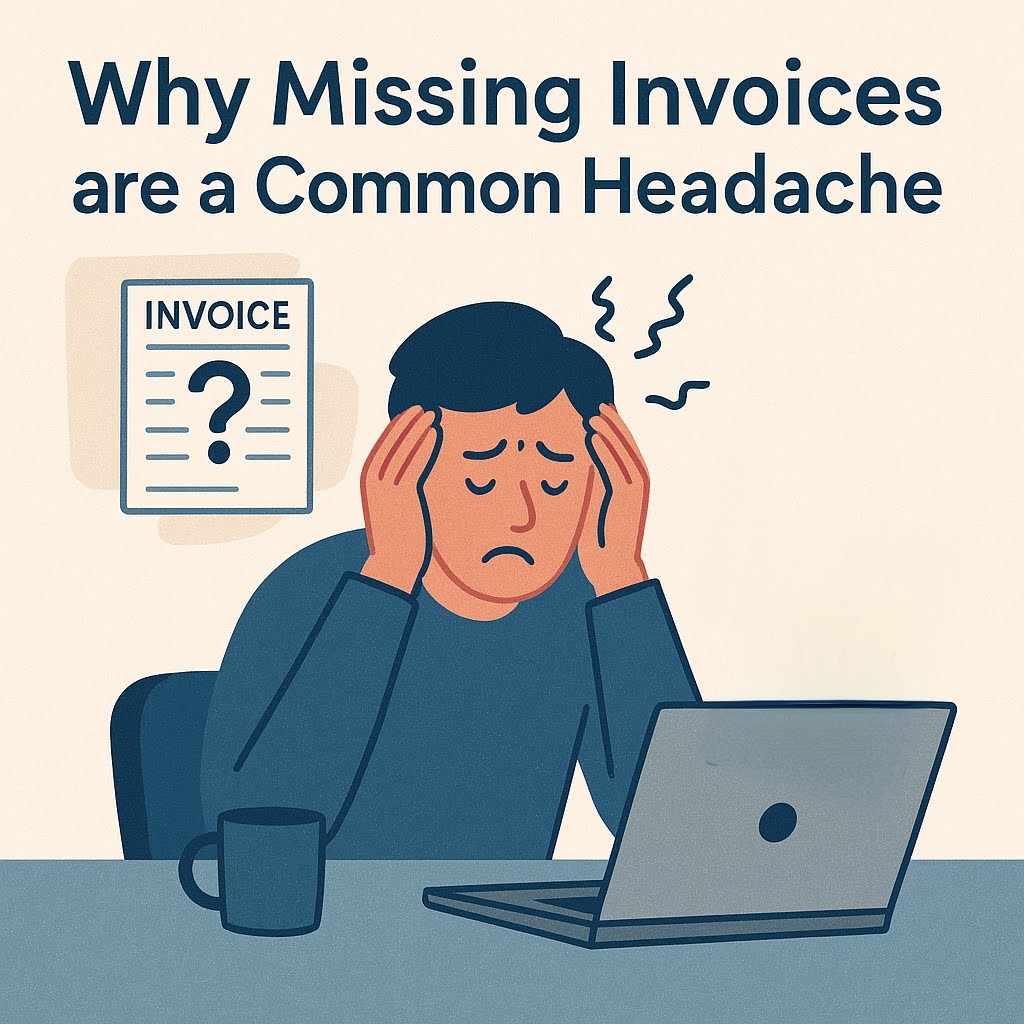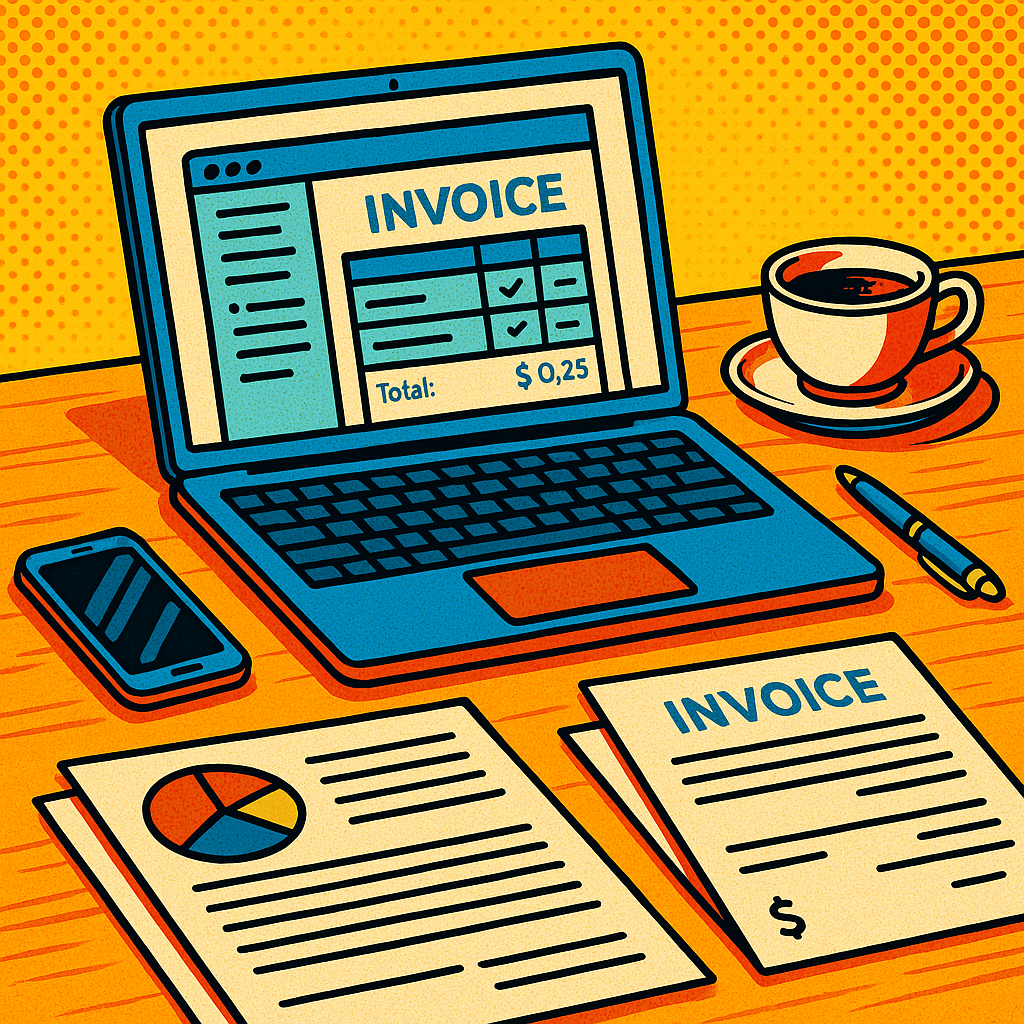Navigating the Maze: How to Create Missing Invoices
Understanding the Importance of Accurate Invoicing
Picture this: it’s the end of the fiscal year, and you’re buried under a heap of financial documents, trying to reconcile accounts. The numbers aren’t adding up. Is it just an oversight, or do you have missing invoices? Missing invoices can be a nightmare, not just for accountants but for anyone trying to keep a business running smoothly. Why is this such a big deal? Well, imagine trying to prepare your tax returns without all the necessary documentation. You’re left scrambling, and that’s assuming you even realize what’s missing before it’s too late.

But let’s not get ahead of ourselves. The initial challenge lies in acknowledging just how critical invoices are for maintaining accurate financial records. They’re not just bills; they’re historical artifacts of your business interactions. Missing an invoice isn’t just about a single transaction; it’s a potential chink in the armor of your financial transparency.
Of course, we’re not the only ones who struggle with this dilemma. Many entrepreneurs find themselves wading through similar waters. However, companies like InvoiceGenie have crafted ingenious solutions to alleviate these woes, emphasizing the simplification of accounting and maintaining hassle-free tax compliance. By integrating technology into your invoicing process, such as using an online invoice generator, you ensure completeness and compliance every step of the way.
It’s these kinds of solutions that transform the invoicing landscape entirely. To better grasp how you can effectively tackle missing invoices and boost efficiency, take a peek at some handy insights on mastering invoice requests. As professionals, it’s crucial to stay a step ahead, understanding not just the ‘why’ but the ‘how,’ and leveraging tools that can bridge these gaps effortlessly.
Identifying the Missing Invoices
Conducting an Invoice Audit
Reviewing Financial Records Systematically
Let’s dive into one of the most effective strategies I’ve encountered—and believe me, it comes up in almost every meeting: the invoice audit. It’s a practical, albeit time-consuming, process that essentially acts as a vital tune-up for your financial engine. Picture yourself piling through your financial records, identifying anomalies, and methodically ticking off what’s accounted for and what’s not. No stone goes unturned. I’ve seen businesses that regularly conduct these audits reduce their missing invoices to a mere fraction of what we typically see in the industry.
Employing Technology for Accurate Tracking
But why stop there when technology can streamline this process marvelously? Solutions like AI-powered accounting software can automatically scan records for discrepancies, notifying you of missing invoices instantly. This trend is gaining traction as more companies realize that manual processes, while reliable, can be error-prone and resource-heavy. With the advent of machine learning tools, we’re stepping into an era where invoice creation is becoming increasingly automated and efficient.
Consult Your Teams and Vendors
Effective Communication Strategies
Now, let’s switch gears. During a strategy session earlier this year, the conversation veered into the realm of communication. After all, who’s on the other end of these invoices? Your vendors and suppliers. Initiating a casual, but structured, line of communication with them often reveals gaps that you might not anticipate. It’s like politely asking your neighbor if they received your package when tracking says “delivered.” Surprisingly effective, isn’t it?
Leveraging Supplier Relationships
Beyond communication, nurturing these relationships can yield dividends too. Once, I stumbled across a case where maintaining strong supplier relations led to proactive sharing of invoicing records. This transparency is invaluable. Collaborate and build trust, and you may find your supplier reminding you of invoices you didn’t even know were missing. To understand more about systems that facilitate such relationships, check out vendor management systems.
Overcoming Challenges in Invoice Creation
Common Mistakes to Avoid
Ensuring Data Accuracy
Now, you might be thinking, “Automated tools sound fantastic, but aren’t they just as prone to errors?” It’s a valid concern. Automation can indeed streamline processes, but it doesn’t waive the need for human oversight. Imagine setting up a clean, functional assembly line only for it to grind to a halt because someone overlooked a minor calibration. It’s the same with invoice data entry. Ensuring data accuracy remains crucial, regardless of how advanced your tools are. It requires regular reviews and updates, and yes, a good old-fashioned human touch once in a while.
Maintaining Consistency Across Documents
But here’s the thing: consistency isn’t just about accuracy; it’s about uniformity. Have you ever received a document where the formatting varies with every page, and it visually screams “disorganized”? Avoiding discrepancies in invoice templates and formats ensures professionalism and facilitates easier tracking and auditing. This common pitfall is often sidestepped by businesses that invest time in creating comprehensive, consistent templates.
Addressing Supplier Delays or Non-Responses
Then there’s the age-old hurdle of supplier delays. “Why hasn’t my reminder email been answered?” you might wonder. Communication with suppliers can sometimes feel like shouting into the void. Sure, vendors have their schedules and priorities, but consistent delays can disrupt your entire financial timeline. Building buffer times into your processes can cushion unexpected delays and prevent bottlenecks.
Still skeptical about the ease of navigating these challenges? I recommend exploring detailed strategies on tackling these issues through [tackling missing invoices solutions and challenges](https://invoicegenie.io/tackling-missing-invoices-solutions-and-challenges/). More often than not, addressing these known pitfalls upfront means fewer headaches down the road. Remember, the goal is a seamless invoicing process that allows you and your team to focus on growth rather than damage control.
Staying Ahead: Preventing Missing Invoices
Best Practices for Efficient Invoicing
Regular Audits and Updates
So, as we unravel the tapestry of invoicing, it’s clear that missing invoices are the loose threads that can lead to a frayed financial picture. Revisiting the critical role invoices play—a point we dived into at the beginning—highlights why proactive strategies are not just beneficial, but necessary. Conducting regular audits and updates isn’t just maintenance; it’s about solidifying the foundation upon which your business builds its financial stability.
Utilizing InvoiceGenie for Seamless Workflow
Let’s not overlook the role of tools like InvoiceGenie—it’s more than an accessory in your toolbox; it’s your personalized guide through the maze of invoicing challenges. By embracing these innovations, businesses aren’t just surviving today’s fast-paced environment; they’re thriving.
Taking Action Today
Reflecting on our journey through tackling missing invoices, one can’t help but think: if these strategies can simplify the life of seasoned pros, imagine what they could do for those just starting out! No, there’s no magic wand here, but there’s certainly immense value in applying what we’ve discussed. Perhaps you’ll find yourself tomorrow, coffee in hand, ticking off those invoicing tasks with newfound efficiency and a dash of confidence.
Consider integrating these practices into your routine not as yet another task but as an investment into your business’s longevity. After all, enhancing your invoicing strategy isn’t just about preventing future headaches—it’s about sculpting a smoother path to success. And who knows, maybe one day you’ll pen down your own nuanced insights on how these little fiscal checks made all the difference in your journey.
html
Frequently Asked Questions
1. What is the importance of creating missing invoices as discussed in “Navigating the Maze: How to Create Missing Invoices”?
Creating missing invoices is crucial for maintaining accurate financial records and ensuring tax compliance. Missing invoices can lead to serious consequences like discrepancies in financial statements, which could affect your business’s credibility and decision-making processes.
2. How can I effectively identify missing invoices?
As outlined in the article, conducting an invoice audit and employing technology for accurate tracking are effective strategies. By reviewing your financial records systematically and using automation tools, you can minimize missing invoices effectively.
3. What are some common challenges in invoice creation?
Common challenges include ensuring data accuracy and maintaining consistency across documents. It’s essential to regularly review and update your data to avoid errors and ensure a professional appearance across all invoices.
4. How can I overcome supplier delays when requesting missing invoices?
To address delays, it’s important to maintain open communication and build strong relationships with your suppliers. Creating buffer times in your invoicing process can also prevent bottlenecks caused by delayed responses. For more on request strategies, see [mastering invoice requests effortlessly](https://invoicegenie.io/mastering-invoice-requests-effortlessly/).
5. What are best practices for staying ahead and preventing missing invoices?
Regular audits, utilizing tools like InvoiceGenie, and maintaining consistent communication with suppliers are key practices. These strategies help solidify financial stability and ensure a smoother invoicing process, contributing to your business’s success.

